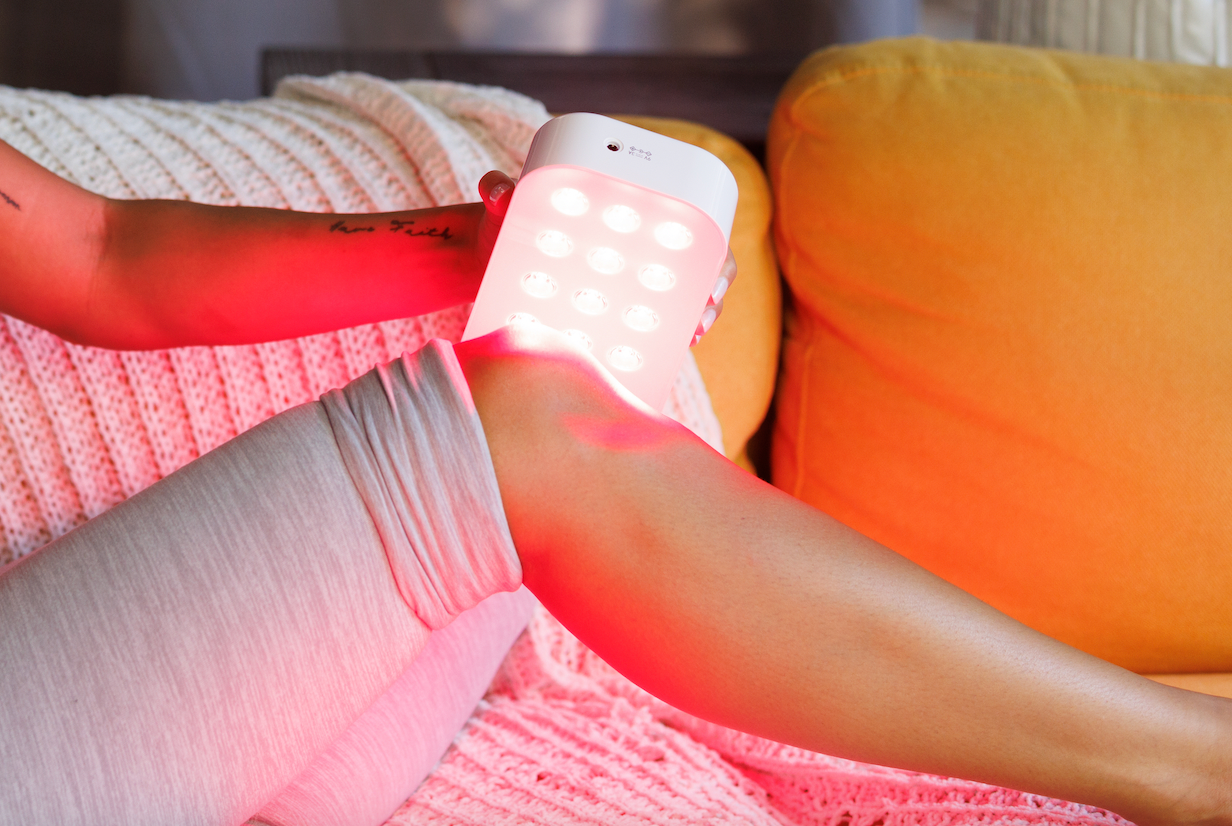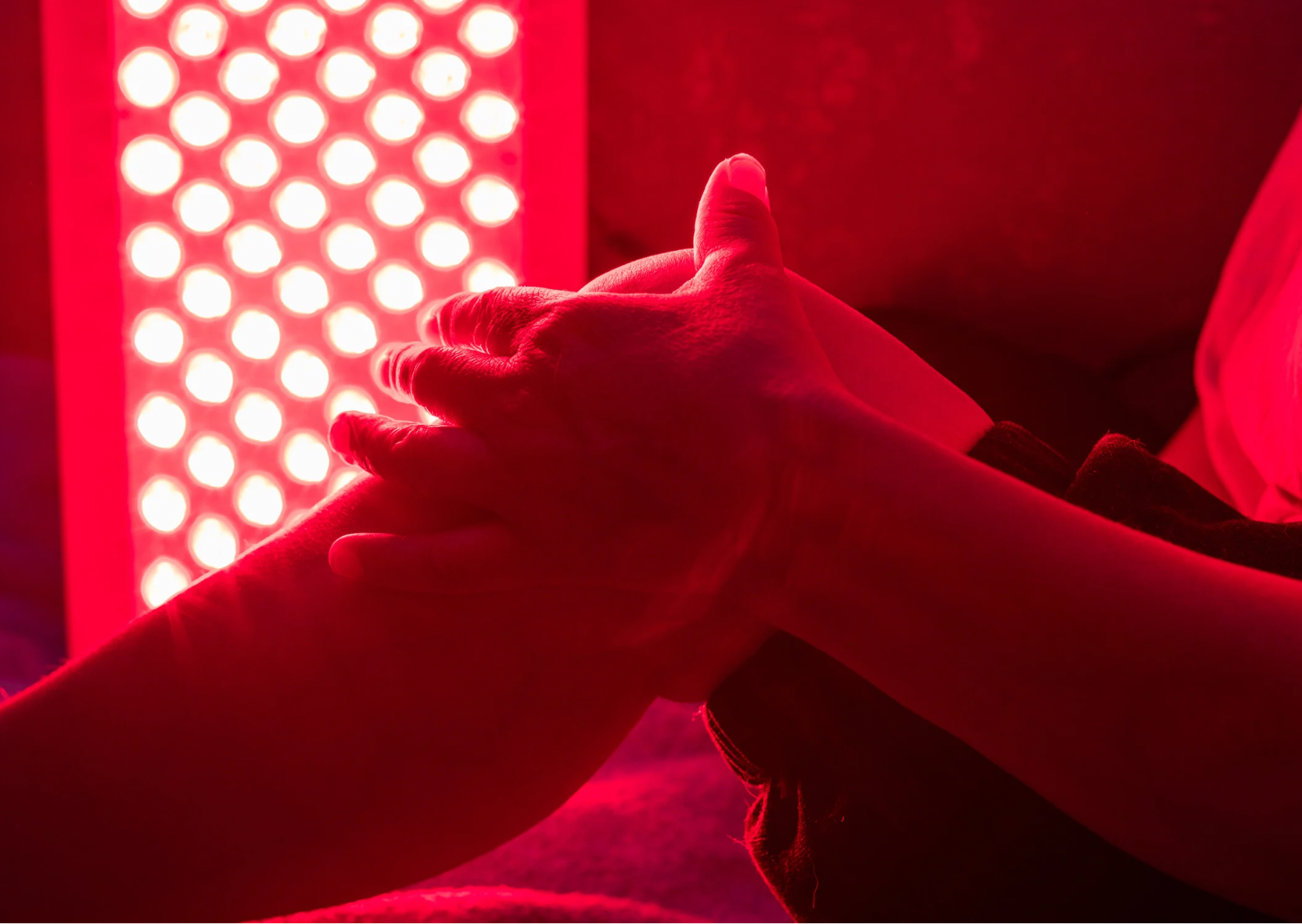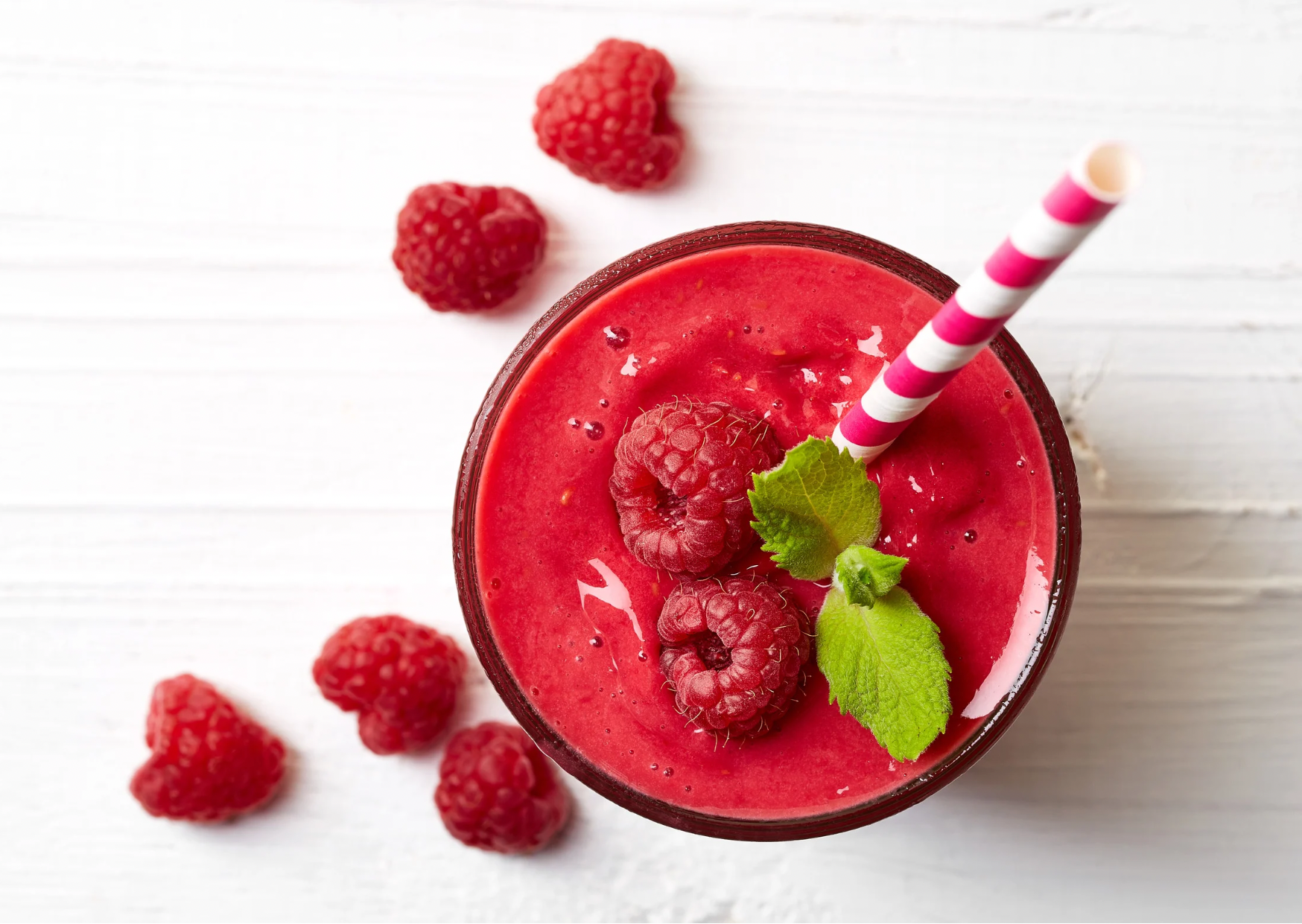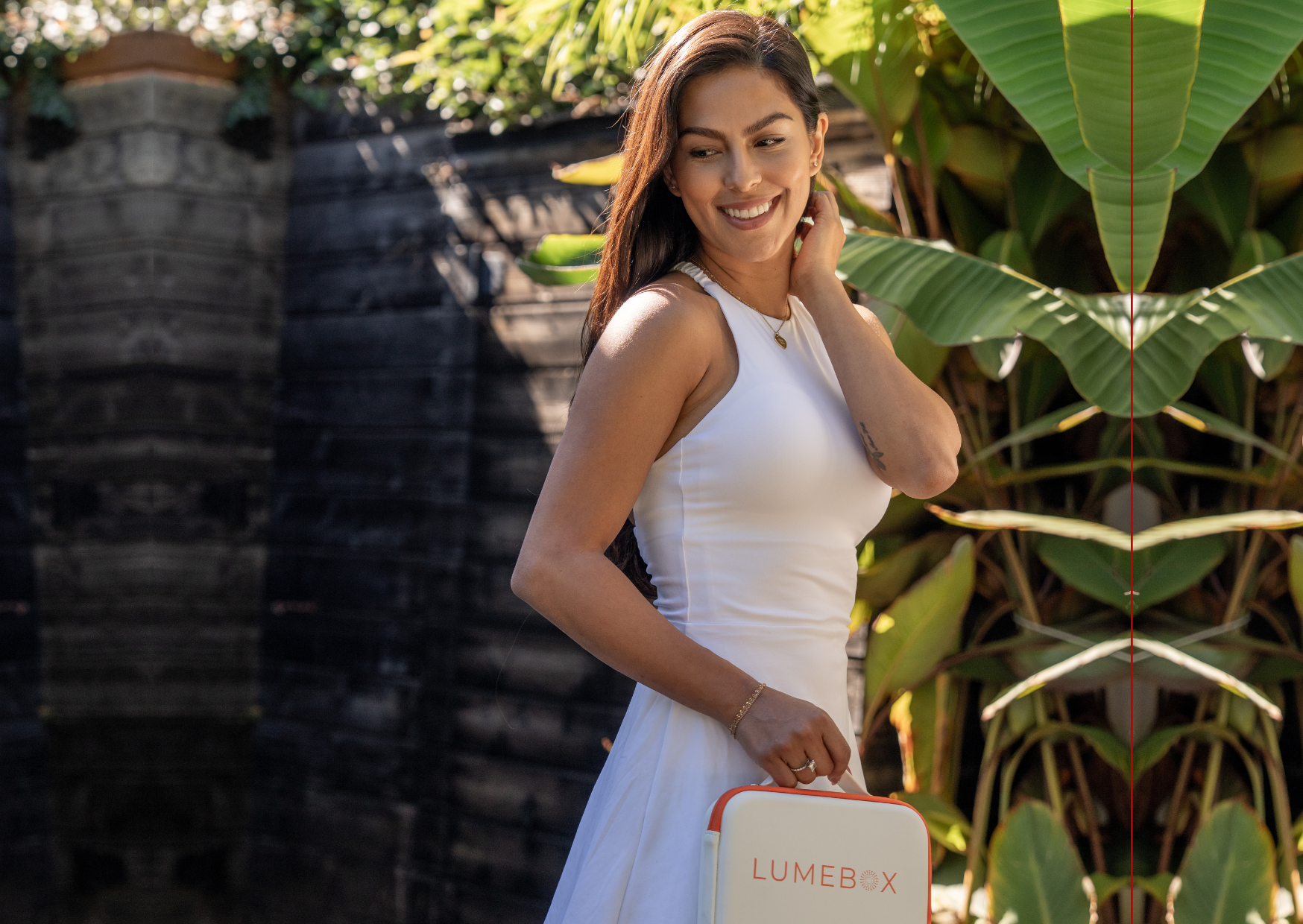Can you overdo red light therapy?
What happens when you do?
You've probably heard the saying, "too much of a good thing", meaning that even if something is generally considered beneficial, it can be harmful or undesirable in excess. So, it’s no surprise that this holds true in many areas of health and wellness.
Whether it’s excessive exercise, eating only one type of food, oversleeping, or prolonged sauna sessions, moderation is key. This may hold true for red light therapy too.
When it feels good, it’s hard to slow down.
I get it - when I started using red light therapy (RLT) for my skin and to recover sore muscles, I couldn’t get enough of it. After giving my body a therapeutic dose for a few weeks, I felt the hard work pay off - clearer skin, a youthful glow, fewer aches and pains, and energized cells all over my body.
Just like exercise, red light therapy works by acting as a small, healthy "stressor" on our bodies, which then stimulates beneficial downstream effects. However, too much may not provide additional benefits, just like excessive exercise isn't healthy. This phenomenon is called the "Biphasic Dose Response.
Biphasic Dose Response in RLT
A review paper published by the world-renowned Wellman Center for Photomedicine [1] (under the red light therapy guru Dr. Hamblin) states that “a biphasic dose response has been frequently observed where low levels of light have a much better effect on stimulating and repairing tissues than higher levels of light”.
This has been found in so many instances across the extensive literature on red light therapy (RLT). It indicates that the positive effects observed at lower doses may not necessarily translate to higher doses. Additionally, there's a point where these benefits level off or decline.
This trend can be represented by the Arndt-Schulz curve:

Red light therapy uses red and near-infrared light wavelengths, delivered through LED bulbs. When these wavelengths are delivered powerfully enough, they can penetrate through your skin and reach deeper tissues like muscles. Some parts of our cells react to this light, encouraging the cells to start working better.
One way red light helps our cells is by supporting mitochondria, which are like tiny power plants in our cells that make energy. This energy is called ATP. Just like a car gives off exhaust fumes when the engine is running, cells produce some extra chemicals (byproducts) when they make energy. Two of these are called Reactive Oxygen Species (ROS) and Nitric Oxide (NO). These byproducts help keep our cells healthy, but too much of them can be harmful.
Here’s Dr. Hamblin’s take on it. In his paper, he outlines three ways in which red light exhibits the biphasic dose response [2]:
-
Excessive Reactive Oxygen Species (ROS): Released as a waste product from energy production in the cell, ROS, in small amounts, can be beneficial, by putting our cells under small amounts of stress. However, too much ROS can cause harm to cells, leading to damage.
-
Excessive Nitric Oxide (NO): Nitric oxide has protective properties when present in low concentrations. However, at high levels, it can become harmful, depending on where it's produced in the body.
- Activation of Cytotoxic Pathways: At low doses, red light triggers protective and stimulating effects. But at high doses, it may activate additional damaging pathways, overpowering the positive effects observed at lower doses of light.
How does this apply to the results we feel and see?
Take using red light therapy for muscle recovery, for instance. One of the protective mechanisms of red light therapy involves triggering the production of nitric oxide (NO). Nitric oxide has dual properties—it can be both pro-inflammatory (bad) and anti-inflammatory (usually good), depending on its concentration within the cells.
At low doses, NO plays a critical role in managing inflammation and promoting the relaxation of muscles. Relaxation is great for recovery because it allows more blood to flow into our muscles, helping with muscle building, repair, and adaptation. However, if red light therapy is overused, it can lead to an excess production of nitric oxide, resulting in inflammation and slowing the speed of recovery. Again, it’s all about balance!
The Science of Too Much Red Light Therapy
Studies in various settings have consistently shown a biphasic dose response. This means that for specific types of cells, there is an optimal dose of red light, while both too little and too much light are less effective.-
Fibroblast Growth [3]: Fibroblasts are skin cells that help build collagen, keeping the skin strong. In a petri dish, scientists used near-infrared light, delivered using a laser (rather than LED) to see if it could help these cells grow better and heal wounds faster. They found that using just the right amount of light helped the cells grow, but too little or too much light didn't help much.
In this study, they looked at how fast particular cells grew back after inflicting a wound on the experimental tissue, under various doses of light. In the first part of the study, they varied the irradiance delivered from 26 to 120 mW/cm2 while shining the light for 2 minutes. The second part varied the time of exposure from 20 seconds to 15 minutes, at a fixed irradiance of 73 mW/cm2.
Here is a graph to show the first experimental set of varied irradiance levels. At the lowest and the highest exposures, the percent recovery shows no significant increase in cell coverage.

This is a graph from the second set of experiments, varying the time of exposure (which resulted in a variety of doses). No significant increase in cell coverage is seen at the highest dose, i.e. more light did not mean there was more healing.

-
Heart Tissue Repair [4]: In studies with cats and dogs, low-energy laser treatment “had a profound effect” on the size of heart tissue damage post-heart attack at lower intensities, but this benefit decreased at higher intensities.
After 14 days, using a low power density of 20 milliwatts per square centimeter (mW/cm2) only reduced the size of the damaged tissue by 2.8%. In contrast, using a power density of 5 mW/cm2 resulted in a much larger reduction of 62% in the size of the damaged tissue.

So, as you can see, studies suggest that an optimal dose of red light therapy can offer numerous benefits, from improving skin health to supporting joint function - but we don’t want to overdo it.
How much is too much?
There isn't yet a definitive scientific consensus on the most effective dose parameters for EVERYONE.
Why? Because everyone's response to the treatment is unique, and the optimal dosage varies from person to person, from indication to indication. Different parts of the body benefit from different amounts of light.
When in doubt start with shorter sessions and gradually increase the dose as you observe how your body reacts to red light therapy.
To avoid using red light therapy too much and to maximize its benefits, consider these tips:
- Know Your Device: Understand the wavelength and irradiance parameters of your RLT device to use it effectively.
- Targeted Use: The optimal duration and intensity depend on the treatment area—facial skin, muscles, or joints each have different needs.
If you want more detailed information on how to choose the best device, check out our Kickstarter guide, free with your first purchase of LUMEBOX!
Signs You Might Be Doing Too Much Red Light Therapy
It’s unlikely you will experience many, or any, side effects with too much light from a small device like LUMEBOX. Even still, if you do start to experience any of the following…
- Redness or dryness
- Headaches
- Fatigue
- Slowed recovery rates (muscles, joints, wounds, pain and inflammation)
- No progress after 3-4 weeks of using RLT regularly
…then, this is a good indicator that you might benefit from reducing the dose. We also recommend you check with your doctor before you start using RLT, in case you have contraindications.
Remember, everyone responds differently - you may need more or less light than someone else to see the same benefit.
How often should you do red light therapy?
How long should you use red light therapy for?
How long will it take until you see results?
If you need help answering any of the following questions, please refer to our YouTube video all about the Biphasic Dose Response!
New to red light therapy? Download our free eBook to help you choose the best device.
Already have a LUMEBOX? Download our 6 time-saving tricks guide!
Medical Disclaimer: The information contained in this blog post is intended for educational purposes only and should not be used as medical advice. Everyone responds to light differently. Testimonials are not a guarantee of the results you or anyone who uses LUMEBOX will get because your success depends entirely on your circumstances, and the studies on red light therapy shared were not specifically performed using LUMEBOX. Please check with your doctor before using red light therapy and do not change your medical treatments or lifestyle without consulting your physician first.
References:
[1] Huang, Y. Y., Chen, A. C., Carroll, J. D., & Hamblin, M. R. (2009). Biphasic dose response in low level light therapy. Dose-response : a publication of International Hormesis Society, 7(4), 358–383. https://doi.org/10.2203/dose-response.09-027.Hamblin
[2] Huang, Y. Y., Sharma, S. K., Carroll, J., & Hamblin, M. R. (2011). Biphasic dose response in low level light therapy - an update. Dose-response : a publication of International Hormesis Society, 9(4), 602–618. https://doi.org/10.2203/dose-response.11-009.Hamblin
[3] Skopin, M. D., & Molitor, S. C. (2009). Effects of near-infrared laser exposure in a cellular model of wound healing. Photodermatology, photoimmunology & photomedicine, 25(2), 75–80. https://doi.org/10.1111/j.1600-0781.2009.00406.x
[4] Oron, U., Yaakobi, T., Oron, A., Hayam, G., Gepstein, L., Rubin, O., Wolf, T., & Ben Haim, S. (2001). Attenuation of infarct size in rats and dogs after myocardial infarction by low-energy laser irradiation. Lasers in surgery and medicine, 28(3), 204–211. https://doi.org/10.1002/lsm.1039




